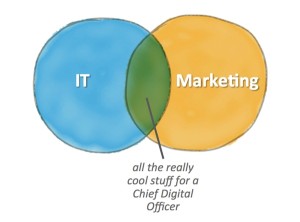As the shelf life of ecommerce sites gets shorter, it becomes harder for marketers to balance the latest trends while maintaining a seamless customer experience. When constant upgrades and revamps become daily tasks, or the functionality just isn’t meeting your growth demands, it might be a sign that it’s time to replatform—or migrate your site to a more stable, streamlined infrastructure.
The bad news is that if you’re considering a replatform, it’s likely because your ecommerce site is highly complex and dynamic, with rich content, targeted merchandising, interactive customer support and advanced search capabilities. The good news is that it doesn’t have to be tricky. Here’s a checklist of six things to help ensure a smoother process.
Think long-term
According to Forrester Research, 39% of surveyed companies see a drop in conversion rates after replatforming, while 44% note slower load times once a new platform goes live. It’s a given that ecommerce sites will need to be further tested and tweaked after replatforming. Therefore, selling the process as a singular project with a definite end date is counterproductive. Replatforming should be treated as a long-term program that caters to the site’s goals and capabilities. Be upfront about this so stakeholders realize that a post-launch dip is part of the plan. And ensure them that you can bring things back into balance through testing and optimization.
Be realistic
The average delay for a replatforming program is 4.2 months; so promising a three-month turnaround is setting your company up for failure. Functionality and usability issues are common once the transition takes place, so be aware of that when devising a timeline. Companies that rush their replatforming efforts often have to spend more time dealing with unexpected snafus, unlike those who allocate enough time to get things right at the first pass. Pro tip: don’t schedule a replatform in Q3 or Q4—unless you enjoy needless holiday chaos! Instead, plan to make the shift earlier in the year (right now is actually a good time!) so any delays that arise are dealt with during the summer, and the bigger issues can get resolved before shopping season begins.
Use teamwork
While it’s tempting to keep replatforming decisions strictly within the marketing department—perhaps under the assumption that less cooks in the kitchen will make things go faster—remember that other departments (IT, sales, executives) are bound to have their own goals for the project, each with their own key performance indicators. Having all that input and feedback is highly valuable, and crucial to a successful replatforming. Keeping everyone in the loop in a diplomatic and transparent way results in a consolidated master KPI list for the program with fair and effective prioritization.
Stay focused
A big replatforming no-no is trying to fix too many problems at once. New site features, design changes, cross-channel implementations, updated order management solutions…implementing all those changes at the same time will make the possibility of things going haywire even more likely. Adding excess scope at the start often leads to trimming things down later on—in other words, wasted time, money and effort. Figure out what the most important changes will be at the start, and implement those in a focused, rational manner.
Know what you need
Replatforming is not the end…only the beginning. Therefore, it’s important to have a clear idea of what tools and interdepartmental support are needed to keep things running smoothly once the transition takes place, and to make those needs clear during preliminary discussions so there’s no surprises. Any manual effort or IT hours should be estimated in advance, as well as any possible ongoing financial outlay beyond upfront costs.
Test everything
Forrester notes that an astounding 63% of companies decide to re-platform based on “perceived ROI” (otherwise known as hunches), while 54% are motivated by internal company demands (also called wishful thinking). That’s a whole lot of guesswork, when what’s needed is actual customer experience testing to see what really improves matters. Any variable you can think of—site traffic, bounce rates, navigation, checkout processes, layout/design, revenue per visitor—can be tested both before and after replatforming to ensure the changes taking place will actually make a difference to the bottom line.







